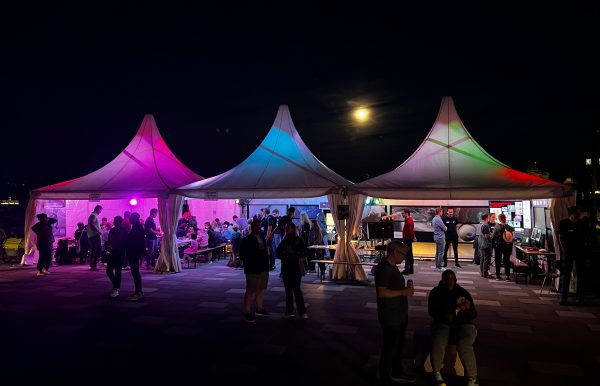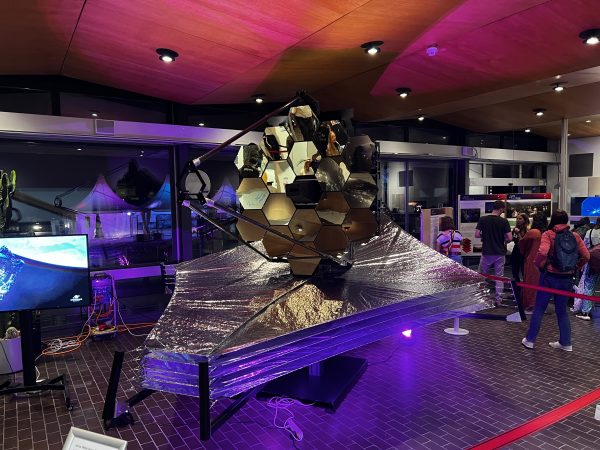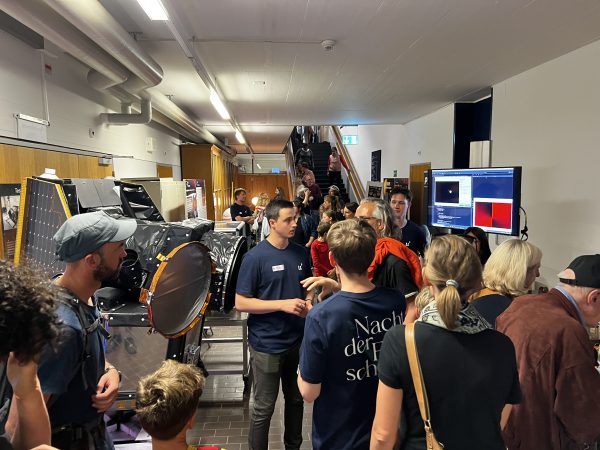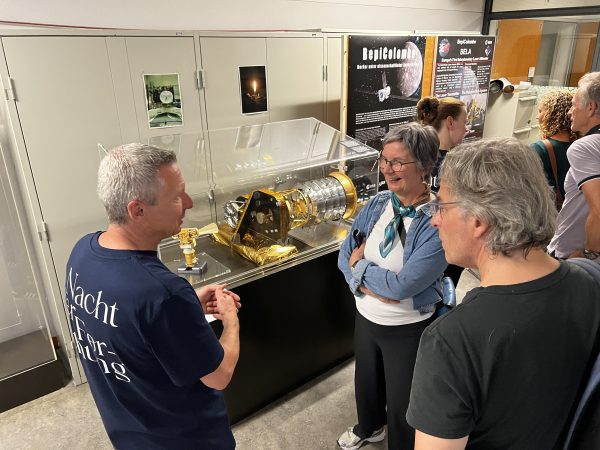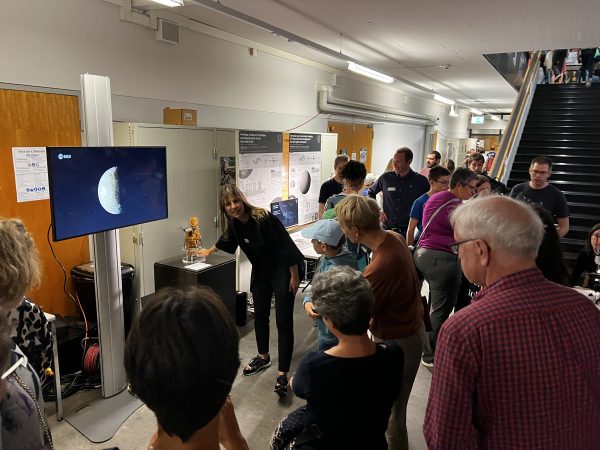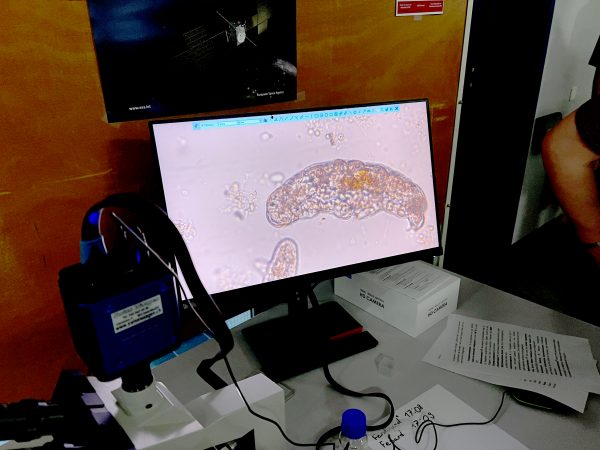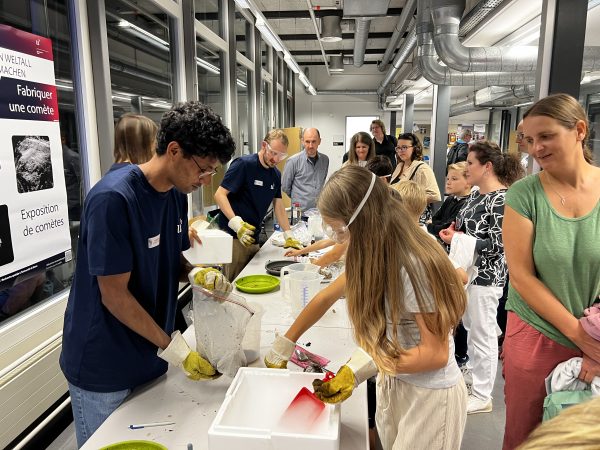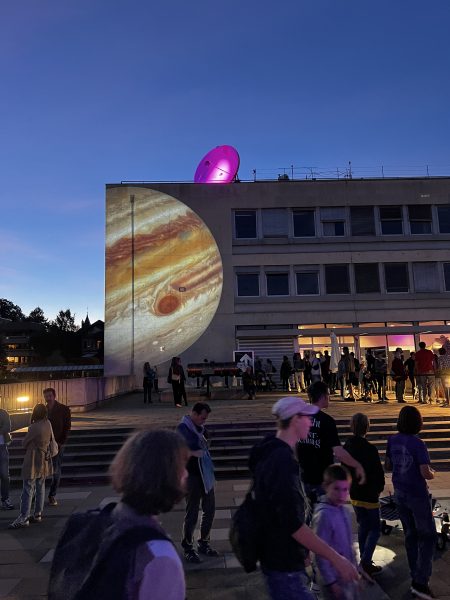One night, a thousand (space) discoveries – the fascination of the 2025 ‘Nacht der Forschung’
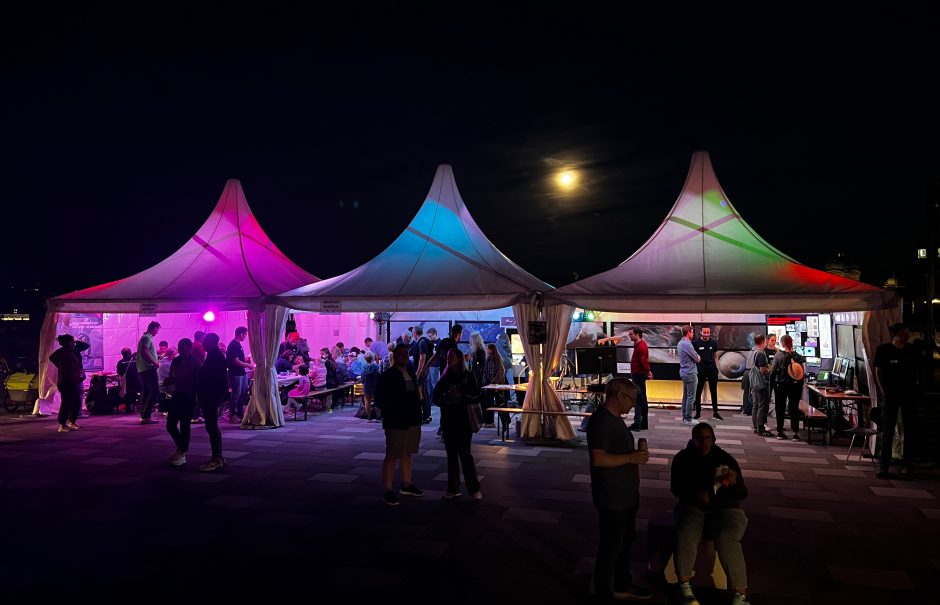
On Saturday, 6 September, the University of Bern became the venue for a very special encounter between science and the public: the Nacht der Forschung (Research Night in English) opened its doors – in sunny weather and pleasant temperatures – and attracted over 10,000 curious visitors. One of the most important topics was space research.
Every three years, the ‘Nacht der Forschung’ (Night of Research) offers insights into current topics and projects in science and technology – in an entertaining, interactive way. This year’s programme was once again diverse, exciting and an experience for all ages. From 16:00 to 23:00, visitors marvelled, researched, tried things out and made discoveries.
There was a special focus on space research – a field in which the University of Bern plays a leading role since the 1960s. The adventure began on the Einstein terrace, where children were building water rockets and launched them into the sky, while in the neighbouring Mars tent, visitors explored the geological secrets of Mars with a rover model and an interactive sandbox.
A real eye-catcher in the foyer was the impressive model of the James Webb Space Telescope (scale 1:4), built by the Swiss Space Museum. Next to it, the NCCR PlanetS mobile planetarium invited visitors on popular journeys through space – with half-hourly shows that were always well attended. Things remained exciting on Earth too: apprentices in the field of polymechanics provided insights into their diverse professional field.
From exoplanets to space missions
In the basement, visitors could literally immerse themselves in the world of exoplanets. In addition to exciting facts and exhibits on the CHEOPS mission, visitors could enjoy a series of interactive stations: for example, they could generate lightning and experience physical phenomena up close. Other stations showed how astronomers use optical methods to search for distant planets, and the transit demonstrator provided a clear illustration of how exoplanets are discovered in the first place.
The first floor was all about two ESA space missions with Bernese participation. One focus was on the BepiColombo mission, which will arrive at the planet Mercury next year. The University of Bern is involved with the two instruments BELA and STROFIO, various components of which were on display.
The JUICE mission, which is scheduled to reach the gas giant Jupiter and its four largest moons in the early 2030s, was also presented. One of its goals is to find out whether conditions for life can be found in the underground oceans of the icy moons. Between the two stands, visitors could also learn about astrobiology.
A particular favourite with the public: tardigrades, also known as water bears. Visible under a microscope and measuring only about 1 millimetre in size, these creatures are considered true survivalists and are therefore regarded as possible models for life under extreme conditions, such as on icy moons.
At the top of the building, everything revolved around comets. The fascination was palpable during the presentation of the planned Comet Interceptor mission, which will investigate a previously unexplored comet in 2029 – using two instruments from Bern, among other things. During ‘comet cooking’, guests young and old were able to make their own comets from dry ice and other ingredients. And those who dared could smell the comet scent – an experience that not everyone found pleasant, but which made them smile all the more.
Planets and rockets projected onto the building
Accompanying the activities at the stands, there were exciting talks in Lecture Hall 099 on current missions and research questions.
The grand finale was an impressive video projection onto the façade of the Exact Sciences building. It combined spectacular images from space with fascinating insights into climate research, mathematics and high-energy physics – a visual highlight and a fitting end to this extraordinary evening.
The Nacht der Forschung 2025 showed once again that science is not only complex, but also creative, inspiring and accessible – and makes all generations dream.
Want more impressions of the “Nacht der Forschung”? Check out the photo gallery on Flickr.
Categories: News

